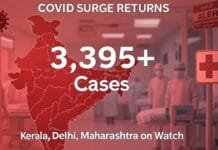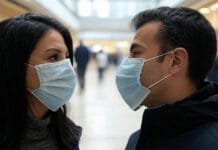INVC NEWS
New Delhi – Delhi and NCR regions are grappling with worsening air quality as pollution levels surge ahead of Diwali. To mitigate the situation, the Graded Response Action Plan (GRAP) has entered Phase 2, imposing restrictions on the use of diesel generators and coal in tandoors. Let’s explore what GRAP is, its various phases, and how it aims to address the pollution crisis in the capital.
1. What is the Graded Response Action Plan (GRAP)?
Explanation:
GRAP is a comprehensive regulatory framework designed to combat air pollution in Delhi and its surrounding areas, particularly during the high-pollution season. It breaks down the response into four phases depending on the severity of air quality, as measured by the Air Quality Index (AQI).
- Phase 1 (AQI 201-300): Moderate to poor air quality. Measures include prohibiting open waste burning and increasing street sweeping.
- Phase 2 (AQI 301-400): Very poor air quality. This phase has just been implemented and includes bans on diesel generators and coal-based tandoors.
- Phase 3 (AQI 401-450): Severe air quality. This triggers a ban on construction activities, and closure of brick kilns.
- Phase 4 (AQI 450+): Severe +. This is an emergency situation with strict measures, including banning truck entry and halting all construction and industrial activities.
2. GRAP Phase 2 Measures: What’s Being Implemented?
Explanation:
With Delhi’s AQI entering the ‘very poor’ category (301-400), GRAP’s Phase 2 has been enforced. The following measures are now in place:
- Ban on Diesel Generators: Diesel generators, which contribute significantly to particulate matter emissions, are now prohibited except for essential services such as hospitals.
- Coal Tandoor Restrictions: Coal burning in tandoors used by eateries and roadside stalls has been banned to reduce emissions.
- Increased Parking Fees: Higher parking fees aim to discourage the use of private vehicles, which contribute to vehicular emissions.
- Enhanced Monitoring: Authorities will intensify air quality monitoring and enforcement of these restrictions to ensure compliance.
3. Why Does Air Pollution Increase Before Diwali?
Explanation:
Every year, the period around Diwali sees a sharp rise in pollution levels. While firecrackers are often blamed, the rise in pollution begins even before the festival, driven by various factors:
- Stubble Burning: Farmers in neighboring states burn crop residue in October and November, leading to a significant increase in particulate matter.
- Vehicular Emissions: The increase in traffic during the festive season adds to the pollution burden.
- Weather Conditions: Cooler temperatures and low wind speed trap pollutants closer to the ground, worsening the air quality.
4. Impact of Phase 2 Measures on Public Health
Explanation:
As the air quality deteriorates, health experts are issuing warnings. Dr. Amit Jindal of RML Hospital highlights a growing number of patients experiencing respiratory issues, throat infections, and eye irritation. The hospital has even set up specialized outpatient departments (OPDs) to handle pollution-related illnesses.
- Advisory for Public Health:
- Avoid outdoor activities during peak pollution hours.
- Wear N95 masks when venturing outdoors.
- Stay hydrated and maintain indoor air circulation with exhaust fans or air purifiers.
5. Long-term Solutions to Combat Air Pollution in Delhi
Explanation:
While GRAP phases are short-term emergency measures, long-term solutions are needed to address Delhi’s pollution crisis sustainably.
- Transition to Clean Energy: Phasing out coal-based energy production and encouraging renewable energy sources.
- Electric Vehicles (EVs): Increasing the adoption of EVs and building charging infrastructure to reduce vehicular pollution.
- Improved Public Transport: Expanding metro networks and encouraging the use of buses can reduce private vehicle usage.
- Waste Management: Proper handling and disposal of waste, especially construction debris, can prevent open burning and dust emissions.
6. What Should Citizens Do to Help Reduce Pollution?
Explanation:
While government actions are crucial, individual efforts are also essential in reducing pollution levels:
- Reduce Vehicle Usage: Opt for carpooling, cycling, or public transport.
- Conserve Energy: Reducing energy consumption can indirectly lower emissions from power plants.
- Avoid Open Burning: Don’t burn leaves or waste, and report such incidents to authorities.
- Use Green Products: Support businesses that use eco-friendly packaging and products to minimize industrial waste.
7. The Role of GRAP in Mitigating Air Pollution
Delhi’s implementation of GRAP Phase 2 is a critical step in controlling the city’s worsening air pollution. However, the effectiveness of these measures relies heavily on enforcement and public cooperation. As the winter season approaches and air quality declines further, stricter phases may be enacted. Citizens and policymakers alike must work together to address this pressing environmental crisis, balancing immediate actions with long-term solutions.
















